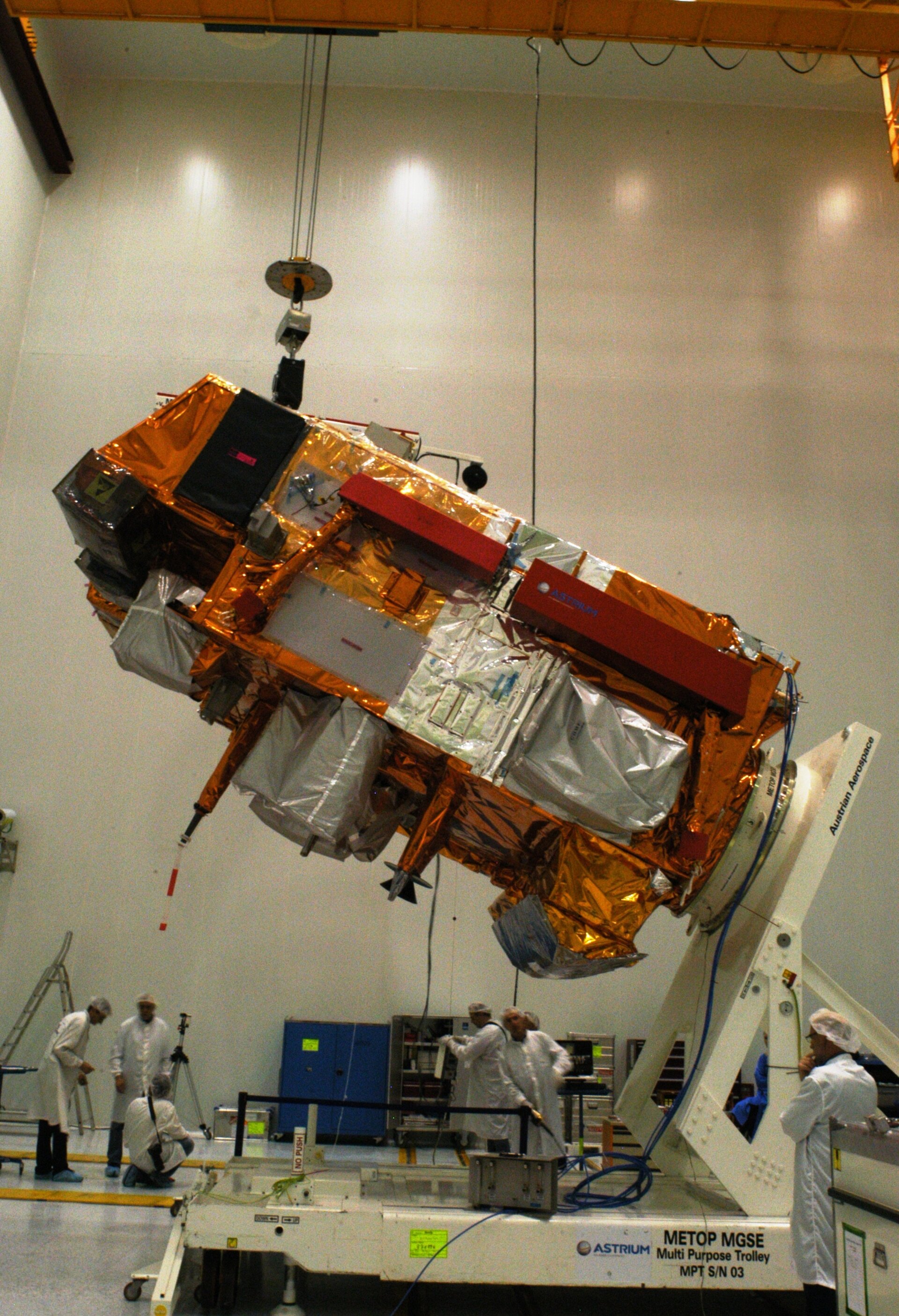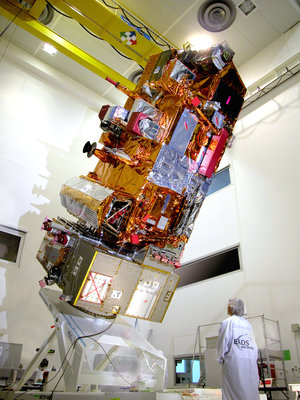About the satellite
The MetOp series, developed by a consortium of European companies led by the main contractor EADS-Astrium, France, builds on the heritage gained from a successful series of European satellites, including the French space agency’s (CNES) SPOT and ESA’s ERS and Envisat.
The satellite consists and two modules: the Payload Module (PLM) and the Service Module (SVM), and a large solar array. The PLM accommodates the whole suite of instruments and associated support equipment.
It includes advanced versions of the widely used scatterometer and ozone-monitoring instruments that flew on the ERS-2 satellite. The SVM, which interfaces with the launcher, provides the main satellite support functions, such as command and control, communications with the ground, power and orbit control and propulsion.
MetOp carries a set of 'heritage' instruments, provided by the United States’ National Oceanic and Atmospheric Administration (NOAA) and CNES, and a new generation of European instruments offering precise sensing capabilities to both meteorologists and climatologists.
The new instruments provide high-accuracy vertical profiles of atmospheric temperature and humidity as well as measurements of wind speed and direction over the ocean. Atmospheric trace gases, notably ozone, are also measured.
Together with the instruments, the satellite weighs 4.1 tonnes and measures 17.6 m x 6.6 m x 5.2 m when in orbit, making it the second largest European Earth observation satellite, after Envisat.
The first of three satellites in the MetOp series, MetOp-A was launched in October 2006 from the Baikonur Cosmodrome in Kazakhstan on a Soyuz/ST Fregat operated by Starsem. MetOp-B was launched on 17 September 2012 and MetOp-C joined them in orbit in November 2018.












